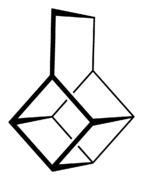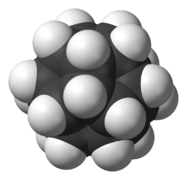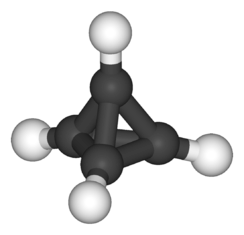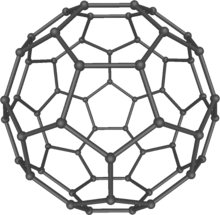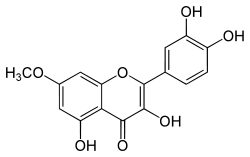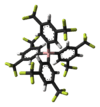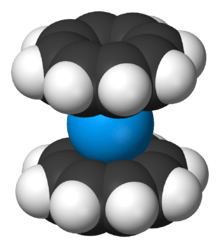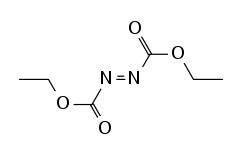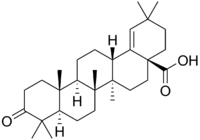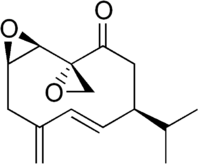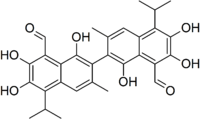List of chemical compounds with unusual names
Chemical nomenclature, replete as it is with compounds with complex names, is a repository for some very peculiar and sometimes startling names. A browse through the Physical Constants of Organic Compounds in the CRC Handbook of Chemistry and Physics (a fundamental resource) will reveal not just the whimsical work of chemists, but the sometimes peculiar compound names that occur as the consequence of simple juxtaposition. Some names derive legitimately from their chemical makeup, from the geographic region where they may be found, the plant or animal species from which they are isolated or the name of the discoverer.
Some are given intentionally unusual trivial names based on their structure, a notable property or at the whim of those who first isolate them. However, many trivial names predate formal naming conventions. Trivial names can also be ambiguous or carry different meanings in different industries, geographic regions and languages.
Godly noted that "Trivial names having the status of INN or ISO are carefully tailor-made for their field of use and are internationally accepted".[1] In his preface to Chemical Nomenclature, Thurlow wrote that "Chemical names do not have to be deadly serious".[2] A website in existence since 1997[3] and maintained at the University of Bristol lists a selection of molecules with silly or unusual names strictly for entertainment. These so-called silly or funny trivial names (of course depending on culture) can also serve an educational purpose. In an article in the Journal of Chemical Education, Dennis Ryan argues that students of organic nomenclature (considered a dry and boring subject) may actually take an interest in it when tasked with the job of converting funny-sounding chemical trivial names to their proper systematic names.[4]
The collection listed below presents a sample of trivial names and gives an idea how chemists are inspired when they coin a brand new name for a chemical compound outside of systematic naming. It also includes some examples of systematic names and acronyms that accidentally resemble English words.
Elements
Glenn Seaborg told his students that he proposed the chemical symbol Pu (from P U) instead of the conventional "Pl" for plutonium as a joke, only to find it officially adopted.[5]
Unununium (Uuu) was the former temporary name of the chemical element number 111, a synthetic transuranium element. This element was named roentgenium (Rg) in November 2004.
Compounds
Name based on shape
| Barrelene | (C8H8), the name derives from the resemblance to a barrel.[6] |
| Basketane | (pentacyclo[4.4.0.02,5.03,8.04,7]decane) (C10H12), a polycyclic alkane with a structure similar to a basket.[3] |
| Churchane | A polycyclic alkane named for looking superficially like a church.[3] |
| Cubane | A hydrocarbon whose eight carbon atoms occupy the vertices of a cube.[7] |
| Dodecahedrane | A Platonic hydrocarbon shaped like a dodecahedron. |
| Fenestrane | A class of compounds with a 'window pane motif' (the name fenestrane derives from the Latin word fenestra, meaning window), comprising four fused carbocycles centred on a quaternary carbon resulting a twice over spiro compound. The illustration at right shows a generic fenestrane as well as the specific examples [4,4,4,4]fenestrane and [5,5,5,5]fenestrane. Fenestranes are of considerable interest in theoretical chemistry though comparatively few have actually been synthesised. |
| Housane | A polycyclic alkane named "housane" due to looking superficially like a house.[3] |
| Ladderane | An organic molecule that looks like a ladder because it contains two or more fused rings of cyclobutane. |
| Olympiadane | A mechanically-interlocked compound based on the topology for the Olympic rings. |
| Olympicene | Refers to the fused 5-benzene rings, C19H11, which is reminiscent of the Olympic Flag.[8] |
| Penguinone | 3,4,4,5-tetramethylcyclohexa-2,5-dienone; a two-dimensional representation of its structure resembles a penguin. |
| Prismane | An isomer of benzene with the carbon atoms arranged in the shape of a triangular prism. |
| Quadratic acid | A square-shaped organic compound, also called squaric acid. |
| Tetrahedrane | A Platonic hydrocarbon shaped like a tetrahedron. |
Named after people
| Buckminsterfullerene | Or buckyballs, a form of carbon named after Buckminster Fuller due to its resemblance to Fuller's geodesic domes. The term was coined by Harold Kroto.[9] The alternative name Footballene was coined by A.D.J. Haymet[10] because the molecule also resembles a football.[3] |
| Bullvalene | (tricyclo[3.3.2.02,8]deca-3,6,9-triene) (C10H10), was named by organic chemist Maitland Jones, Jr. for William "Bull" Doering who predicted its properties in 1963.[11][12] Within a specific temperature range the molecule is subject to rapid degenerate Cope rearrangements with the result that all carbon atoms and hydrogen atoms are equivalent and that none of the carbon–carbon bonds is permanent. |
| Dickite | (Al2Si2O5(OH)4), a clay-like material with a number of manufacturing uses, one of which is as a coating for high-quality bond paper. It is named after its discoverer, Dr. W. Thomas Dick.[3] |
| Josiphos | A well-known catalyst, named after Josi Puleo, the technician who first prepared it.[13] Mandyphos and Taniaphos also exist. |
Named after fictional characters
Sounding like vulgarisms
| Arsole | (C4H5As), an analogue of pyrrole in which an arsenic atom replaces the nitrogen atom.[16] The aromaticity of arsoles has been debated for many years.[17] The compound in which a benzene ring is fused to arsole — typically on the carbon atoms 3 and 4 — is known as benzarsole.[3] |
| Bastardane | A close relative to adamantane and its proper name is ethano-bridged noradamantane. Because its unusual ethano-bridge was a deviation from the standard hydrocarbon caged rearrangements, it came to be known as bastardane—the unwanted child.[3][18] |
| Crapinon | An anticholinergic drug, one side effect of which is constipation.[3] |
| Cumene | The common name for isopropylbenzene; derived from cumin (Cuminum cyminum) |
| Cummingtonite | ((Mg,Fe)7Si8(OH)22), a magnesium-iron silicate hydroxide, first identified in Cummington, Massachusetts.[3] |
| DAMN | Diaminomaleonitrile, a cyanocarbon that contains two amine groups and two nitrile groups bound to an ethylene backbone. |
| DuPhos | A class of asymmetric ligands for asymmetric synthesis. The name DuPhos is derived from the chemical company that developed this type of ligand (DuP, DuPont) and the compound class of phospholanes (Phos) it belongs to. |
Earthcide,
or Fartox | (C6Cl5NO2), also called Quintozene, some of the many names for pentachloronitrobenzene, a fungicide.[19] |
| Fucitol | (C6H14O5), an alcohol derived from Fucus vesiculosis, a North Atlantic seaweed. Its optical isomers are also called D-fuc-ol and L-fuc-ol.[3] |
| fucK | The name of the gene that encodes L-fuculokinase, an enzyme that catalyzes a chemical reaction between L-fuculose, ADP, and L-fuculose-1-phosphate.[3] |
| Fukalite | (Ca4Si2O6(CO3)(OH, F))2, a rare form of calcium silicocarbonate mined in the Fuka region of Japan.[3] |
| Ru(Tris)BiPy-on-a-stick | Shorthand form of (trans-1,4-bis[(4-pyridyl)ethenyl]benzene)(2,2'-bipyridine)ruthenium(II).[20] |
| Pizda | A substance first synthesized by a group of Australian chemists. In some Slavic countries, the word pizda is a vulgarism for "vagina" (see Appendix:Proto-Slavic/pizda). |
Related to sex
Related to body (mal)functions
Related to death and decay
Related to religion or legend
Sounds like a name (person, brand or organization)
A part sounds like an English word
| Bongkrek acid | Name sounds like the English names for bong, crack cocaine, and lysergic acid diethylamide. |
| Complicatic acid | A sesquiterpenoid antibiotic derived from Stereum complicatum, this is also known as dehydrohirsutic acid.[34] |
| Germane | The simplest hydride of germanium, analogous to methane and silane. |
| Germanic acid | (Ge(OH)4), the hydrated form of germanium dioxide |
| HeH+ | Chemical formula of the helium hydride ion, a polyatomic ion containing the noble gas helium.[35] |
| Hirsutene | [36][37] Is also named after an animal, a goat (Hircus). |
| Jesterone | A ketone with molecular formula C15H20O4 derived from the endophytic fungus Pestalotiopsis jesteri. [38] |
| Magic acid | A superacid consisting of a mixture, most commonly in a 1:1 molar ratio, of fluorosulfuric acid (HSO3F) and antimony pentafluoride (SbF5). |
| Megaphone | A ketone derived from the root of Aniba megaphylla.[39] |
| Moronic acid | [3-oxoolean-18-en-28-oic acid], a natural triterpene |
| Mucic acid | A product of nitric acid oxidation of galactose or galactose-containing compounds |
| Muscovite | A phyllosilicate mineral of aluminium and potassium. |
| Noggin | A signalling protein involved in embryonic development. |
| Performic acid | A strongly oxidizing acid related to formic acid. |
| Periodic acid | Or per-iodic acid, is pronounced // PURR-eye-OD-ik and not *// PEER-ee-OD-ik. It refers to one of two interconvertible species: HIO4 (metaperiodic acid), or H5IO6 (orthoperiodic acid - illustrated at right). The per- prefix in the name denotes that iodine is present in its highest possible (+VII) oxidation state. |
| Picket Fence Porphyrin | (5,10,15,20-tetrakis(alpha,alpha,alpha-2-pivalamidophenyl)porphyrin), used to model heme enzyme active sites. |
| Piranha solution | A strongly oxidizing mixture of hydrogen peroxide and sulfuric acid used to remove organic residues from substrates and glassware. The name refers to the voracious appetite of the Amazonian piranha fish. |
| Psicose | (C6H12O6), a rare low-calorie sugar that provides 0.3% as much energy as sucrose. |
| Rednose | A sugar derived from the degradation of rudolphomycin.[14] |
| Rhamnose | A sugar naturally occurring in buckthorn (rhamnus). |
| Sillimanite | Aluminium silicate polymorph, sounds like "Silly man-ite" |
| Titanic acid | The hydrated form of titanium dioxide. |
| Traumatic acid | A substance occurring in plants, with a role in healing damaged tissue. |
Other
| Carbonite | (CO22−), an unstable anion and carbene derived from carbonous acid. |
| Dinocap | (C18H24N2O6), a miticide and contact fungicide used to control powdery mildew in crops. |
| Fluoboric acid | (HBF4), tetrafluoroborate or tetrafluoroboric acid. |
| Homocubane | Any molecule synthesized from cubane. |
| Methionylthreonylthreonylglutaminylarginyl...isoleucine | The IUPAC name for Titin. This is the largest known protein and so has the longest chemical name. Written in full, it contains 189,819 letters.[40] |
| Periplanone B | A pheromone of the female American cockroach. Named after the scientific name of this species, Periplaneta americana, not because of periplanarity. |
| Thebacon | Dihydrocodeinone enol acetate, an opioid analgesic or antitussive. |
| FOOF | Dioxygen difluoride, O2F2, an extremely unstable compound which reacts explosively with most other substances – the nickname "FOOF" is a play on its formula. |
| Furfural | Furfural is an industrial chemical compound derived from a variety of agricultural byproducts, including corncobs, oat and wheat bran, and sawdust. The name furfural comes from the Latin word furfur, meaning bran, referring to its usual source.[3] |
| Gossypol | A toxin found in cottonseed used as a male oral contraceptive.[3] |
| HArF | chemical formula of argon fluorohydride, the only known neutral compound of the noble gas argon.[41] |
|
See also
Notes and references
- ↑ Godly, E.W. (1998). Chemical Nomenclature. Kluwer Academic Publishers. p. 20. ISBN 0-7514-0475-6.
- ↑ Thurlow, Kevin (1998). Chemical Nomenclature. Kluwer Academic Publishers. xii. ISBN 0-7514-0475-6.
- ↑ 3.0 3.1 3.2 3.3 3.4 3.5 3.6 3.7 3.8 3.9 3.10 3.11 3.12 3.13 3.14 3.15 3.16 3.17 3.18 3.19 3.20 3.21 3.22 3.23 3.24 May, Paul (28 May 2013). "Molecules with Silly or Unusual Names". Bristol University. Retrieved 1 November 2013.
- ↑ Dennis, Ryan (1997). "Old MacDonald Named a Compound: Branched Enynenynols" (PDF). Journal of Chemical Education 74 (7): 782. Bibcode:1997JChEd..74..782R. doi:10.1021/ed074p782. Retrieved 2007-08-16.
- ↑ Glenn T. Seaborg, Citizen-Scholar, By Peggy House, Reprinted from The Seaborg Center Bulletin, April 1999
- ↑ Zimmerman, Howard E.;; Robert M. Paufler. "Bicyclo [2.2.2]octa-2,5,7-triene (barrelene), a unique cyclic six electron pi system". Journal of the American Chemical Society 82 (6): 1514–1515. doi:10.1021/ja01491a071.
- ↑ Verbrugge, P. A. (1977). "Unusual organic compounds. XXIV. Compounds with the formula (CH)n. (d). Synthesis of cubane, (CH)8; homocubanes". Chemie en Techniek (Amsterdam) 32 (4): 120–123.
- ↑ "'Olympic rings' molecule olympicene in striking image". BBC Online. 27 May 2012. Retrieved 28 May 2012.
- ↑ Kroto, H.W.; Heath, J.R.; O'Brien, S.C.; Curl, R.F.; Smalley, R.E. (1985). Nature 318 (6042): 162. Bibcode:1985Natur.318..162K. doi:10.1038/318162a0.
- ↑ Haymet, A.D.J. (1986). J. Am. Chem. Soc. 108: 319. doi:10.1021/ja00262a035.
- ↑ Doering, W. von E.; Roth, W. R. (1963). "A Rapidly Reversible Degenerate Cope Rearrangement : Bicyclo[5.1.0]octa-2,5-diene". Tetrahedron 19 (5): 715–737. doi:10.1016/S0040-4020(01)99207-5.
- ↑ Ault, Addison (2001). "The Bullvalene Story. The Conception of Bullvalene, a Molecule That Has No Permanent Structure". J. Chem. Educ. 78 (7): 924. Bibcode:2001JChEd..78..924A. doi:10.1021/ed078p924.
- ↑ Blaser, Hans-Ulrich; Brieden, Walter; Pugin, Benoit; Spindler, Felix; Studer, Martin; Togni, Antonio (2002). "Solvias Josiphos ligands: from discovery to technical applications". Topics in Catalysis 19 (1): 3–16. doi:10.1023/A:1013832630565.
- ↑ 14.0 14.1 14.2 14.3 14.4 14.5 14.6 14.7 Nettleton DE Jr, Balitz DM, Doyle TW, Bradner WT, Johnson DL, O'Herron FA, Schreiber RH, Coon AB, Moseley JE, Myllymaki RW, J Nat Prod. 1980 Mar-Apr;43(2):242–258.
- ↑ "Canadian Patents Database CA 1110562: Anthracycline antibiotic designated RUDOLPHOMYCIN". Retrieved 2007-08-16.
- ↑ G. Märkl and H. Hauptmann (1983-06-14). "Untersuchungen zur Chemie der Arsole 1,1-dichlor-1-R-λ5-arsole-1-chlorarsole 2,2′,5,5′-tetraphenyldiarsolyl (Studies on the chemistry of arsoles)". J. Organomet. Chem. 248 (3): 269–285. doi:10.1016/S0022-328X(00)98709-6.
- ↑ Mikael P. Johansson and Jonas Jusélius (2005). "Arsole Aromaticity Revisited". Lett. Org. Chem. (3): 469–474.
- ↑ Schleyer, Paul von Rague; Eiji Osawa; Michael G. B. Drew (1968). "Nonacyclo[11.7.1.12,18.03,16.04,13.05,10.06,14.07,11.015,20]docosane, a bastard tetramantane" (PDF). J. Am. Chem. Soc 90 (18): 5034–5036. doi:10.1021/ja01020a053. Retrieved 2007-08-15.
- ↑ "NIST Standard Reference Database 69, June 2005 Release: NIST Chemistry WebBook - Pentachloronitrobenzene". Retrieved 2007-08-16.
- ↑ Toma, SH; Uemi, M; Nikolaou, S; Tomazela, DM; Eberlin, MN; Toma, HE (2004). Inorg Chem. 43 (11): 3521–3527. doi:10.1021/ic0352250.
- ↑ Uri J, Csoban G, Viragh E., Acta Physiol Hung. 1951;2(2):223-8.
- ↑ See, for example, Okibe, N; Johnson, DB (2004). "title". Biotechnology Letters 24 (23): 2011–2016. doi:10.1023/A:1021118915720.
- ↑ "BARF". ChemSpider. Royal Society of Chemistry. 2013. Retrieved 4 November 2013.
- ↑ D.O. Chester and J.A. Elix, Australian Journal of Chemistry 32 (1979) 2565-2569 doi:10.1071/CH9792565
- ↑ NORDENSTROM BE (1951). "Effect of cadaverine and lysine on the urinary excretion of piperidine in rabbits". Acta pharmacologica et toxicologica 7 (3): 287–296. doi:10.1111/j.1600-0773.1951.tb02870.x. PMID 14856760.
- ↑ R A Klein, G P Hazlewood, P Kemp, and R M Dawson, Biochem J. 1979 December 1; 183(3): 691–700.
- ↑ Apitz-Castro R, Béguin S, Tablante A, Bartoli F, Holt JC, Hemker HC (1995). "Purification and partial characterization of draculin, the anticoagulant factor present in the saliva of vampire bats (Desmodus rotundus)". Thromb. Haemost. 73 (1): 94–100. PMID 7740503.
- ↑ Theerasilp S, Kurihara Y (August 1988). "Complete purification and characterization of the taste-modifying protein, miraculin, from miracle fruit". J. Biol. Chem. 263 (23): 11536–11539. PMID 3403544.
- ↑ Prelog, V., Seiwerth,R. (1941). Berichte 74: 1644 and 1769. doi:10.1002/cber.19410741109.
- ↑ Not to be confused with the fictional material adamantium
- ↑ Parent Hydride Names and Substantive Nomenclature (PDF). IUPAC. March 2004. p. 16.
- ↑ Charles O, Coolsaet B (1972). "[Prevention of hemorrhage in prostatic surgery. Apropos of the study of the hemostatic activity in prostatectomy of a new molecule: beta-naphthoquinone monosemicarbazone (Naftazone)]". Annales d'urologie (in French) 6 (3): 209–212. PMID 4562066.
- ↑ "PEPPSI Catalysts". Retrieved 2009-04-01.
- ↑ T. Money (1975), "Sesquiterpenoids", Terpenoids and Steroids, vol. 5, Royal Society of Chemistry, p. 69, ISBN 9780851862965, ISSN 0300-5992
- ↑ Hogness, T.; Lunn, E. (1925). "The Ionization of Hydrogen by Electron Impact as Interpreted by Positive Ray Analysis". Physical Review 26 (1): 44–55. doi:10.1103/PhysRev.26.44.
- ↑ Tandem radical approach to linear condensed cyclopentanoids. Total synthesis of (.+−.)-hirsutene Dennis P. Curran and Donna M. Rakiewicz J. Am. Chem. Soc.; 1985; 107(5) pp 1448 - 1449; doi:10.1021/ja00291a077
- ↑ Isolation, structure and synthesis of hirsutene, a precursor hydrocarbon of coriolin biosynthesis Shigeo Nozoe, Jun Furukawa, Ushio Sankawa and Shoji Shibata Tetrahedron Letters Volume 17, Issue 3 , January 1976, Pages 195-198 doi:10.1016/0040-4039(76)80013-5
- ↑ "Jesterone and hydroxy-jesterone antioomycete cyclohexenone epoxides from the endophytic fungus Pestalotiopsis jesteri" Jia Yao Li and Gary A. Strobel, Phytochemistry, 57 (2001) 261-265
- ↑ SM Kupchan, KL Stevens, EA Rohlfing, BR Sickles, AT Sneden, RW Miller, RF Bryan, J. Org. Chem., 43(4) (1978) 586
- ↑ Sam Kean (2011), The Disappearing Spoon, Little, Brown, p. 36, ISBN 9781446437650
- ↑ Räsänen, Markku; Khriachtchev, Leonid; Pettersson, Mika; Runeberg, Nino; Lundell, Jan (2000). "A stable argon compound". Nature 406 (6798): 874–876. doi:10.1038/35022551. PMID 10972285.
Bibliography
- E.C. Alyea, "Metal Complexes of Ditertiary Arsines. Chapter in Transition Metal Complexes of Phosphorus, Arsenic and Antimony Ligands", MacMillan, 1973. Chapter: "Some amusing names of arsine ligands: edas, vdias, dam, ffars etc"
- J. Andraos, "Glossary of Coined Names & Terms Used in Science", York University, 2004.
- Giles, P.M. (1999). "Revised Section F: Natural products and related compounds". Pure Appl. Chem. 71 (4): 587–643. doi:10.1351/pac199971040587. Retrieved 2007-08-16.
- Aronson, Jeff (1999). "That's show business". British Medical Journal (BMJ Group) 319 (7215): 972. doi:10.1136/bmj.319.7215.972. PMC 1116803. PMID 10514162. Retrieved 3 November 2013.
- Browne, Malcolm W. (April 22, 1986). "Chemists dabble in whimsy". International New York Times. Retrieved 3 October 2013.
- Paul May, "Molecules with Silly or Unusual Names," Imperial College Press, July 2008, ISBN 978-1-84816-207-5.
- Metanomski, W. V. (1987). "Unusual Names Assigned to chemical substances". Chem. Int. 9: 211–215.
- Monk, Felonious (13 April 2006). "Chemical Cock-ups: A Story of How Not to Name a Chemical Compound". h2g2: The guide to life, the universe and everything. Not Panicking Ltd. Retrieved 30 October 2013.
- Alex Nickon and Ernest F. Silversmith, "Organic Chemistry, the Name Game: Modern Coined Terms and Their Origins", Pergamon 1987. ISBN 0-08-034481-X.
- Randall, David (February 1, 2004). "Storyville: Molecular scientists have a word for it". The Independent on Sunday (London, England). (subscription required)
- Wallechinsky, David; Wallace, Amy (2005). "24. Molecules and amoebas with funny names". The new book of lists : the original compendium of curious information. New York, N.Y.: Canongate. pp. 203–205. ISBN 9781841957197.

